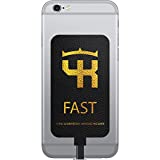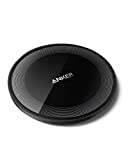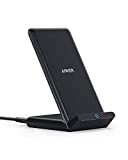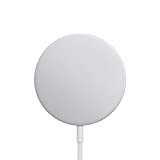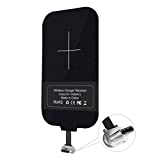iPhone SE (2020) Qi Wireless Charging:
Does the iPhone SE have Wireless Charging? Yes, the 2020’s iPhone SE (2nd generation) features integrated Qi Wireless Charging with 7.5 Watts.
If you are looking for a Qi Charger, you’ll find the best iPhone Wireless Chargers here.
iPhone SE 2020 Charger
How to charge new iPhone SE 2 wirelessly?
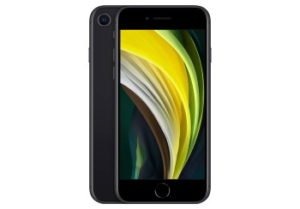 Apple has once again decided in favour of the wireless charging standard Qi and has permanently integrated it – so the new iPhone SE (2020) is Qi enabled. You can charge your iPhone SE (2nd generation) wirelessly with any standard Qi charging station. The new iPhone SE also works with the 7.5 watt power level for wireless charging which is common for Apple. Some older iPhones may need a software upgrade for fully enabling wireless charging. If you are interested in iPhone Wireless Chargers, you find more information here. The following steps show you how to charge your new iPhone SE wirelessly:
Apple has once again decided in favour of the wireless charging standard Qi and has permanently integrated it – so the new iPhone SE (2020) is Qi enabled. You can charge your iPhone SE (2nd generation) wirelessly with any standard Qi charging station. The new iPhone SE also works with the 7.5 watt power level for wireless charging which is common for Apple. Some older iPhones may need a software upgrade for fully enabling wireless charging. If you are interested in iPhone Wireless Chargers, you find more information here. The following steps show you how to charge your new iPhone SE wirelessly:
- Choose a 7.5 Watts Wireless Charger
- Place iPhone SE (2020) on Qi Charger
- Wireless Charging starts automatically
If you use a standard qi charger without a 7.5 watt stage for the Apple iPhone, your phone will be charged at 5 watts, which takes a little more time to fully charge the battery. We therefore recommend using a Qi charger that is designed for Apple iPhones as well.
» View Best iPhone Qi Chargers
iPhone SE 2 Qi Wireless Charging
The iPhone SE 2, or the iPhone SE 2020 as it’s commonly known, is Apple’s modern-day answer to budget-friendly smartphones. With an incline towards providing users with impressive technology at more attainable prices, the iPhone SE 2 doesn’t compromise on quality or functionality. One of its core features that makes this possible is the inclusion of Qi wireless charging functionality.
Understanding Qi Wireless Charging on iPhone SE 2
Qi: This is the universal standard for wireless charging of battery-operated devices like phones, tablets, and powerful electronics. iPhone SE 2 supports the Qi standard, thus making it suitable for use with most wireless chargers available on the market.
A few practical points to consider:
– While charging, make sure the phone is aligned properly with the centre of the charging pad for maximum efficiency.
– Maintain your device’s case thickness to less than 3mm for optimal charging speed.
– Avoid metal or magnetic objects in the proximity of the charging spot as they can interfere with the process.
Apple’s Proprietary Wireless Chargers
While there are multiple wireless charger brands compatible with the Qi standard, it’s worth noting that Apple’s own MagSafe charger and the discontinued AirPower are suitable options for the iPhone SE 2. However, unlike the iPhone 12 series, the iPhone SE 2 doesn’t incorporate the magnetic alignment feature, which is a significant aspect of the MagSafe charger.
Benefits of Qi Wireless Charging on iPhone SE 2
– Convenience: No need to plug and unplug each time you need to use your phone. Just grab your device from the charging pad and go.
– Safety: Reduced risk of electric shock as there are no exposed electrical connectors.
– Usability: Compatible with a wide range of devices. Meaning, you can share your charger with other Qi-enabled devices.
– Longevity: Since there’s no constant plugging and unplugging, the wear and tear on the phone’s charging port is significantly reduced.
Experience with Qi Wireless Charging on iPhone SE 2
Wireless charging may not be as fast as the traditional cable charging, but the convenience it offers is unparalleled. As per user reviews and experiences, it has been found to be a popular feature especially for those who charge their devices overnight or those who work at a desk and wish to grab their phones occasionally without the trouble of unplugging them every time.
To sum up, from lending convenience, sustaining device longevity, to providing safer device handling, the iPhone SE 2 Qi wireless charging feature is a user-friendly addition that encourages cord-free handling of the smartphone. It endorses the evolving trend of wireless technology, making it a versatile choice for the modern user.
